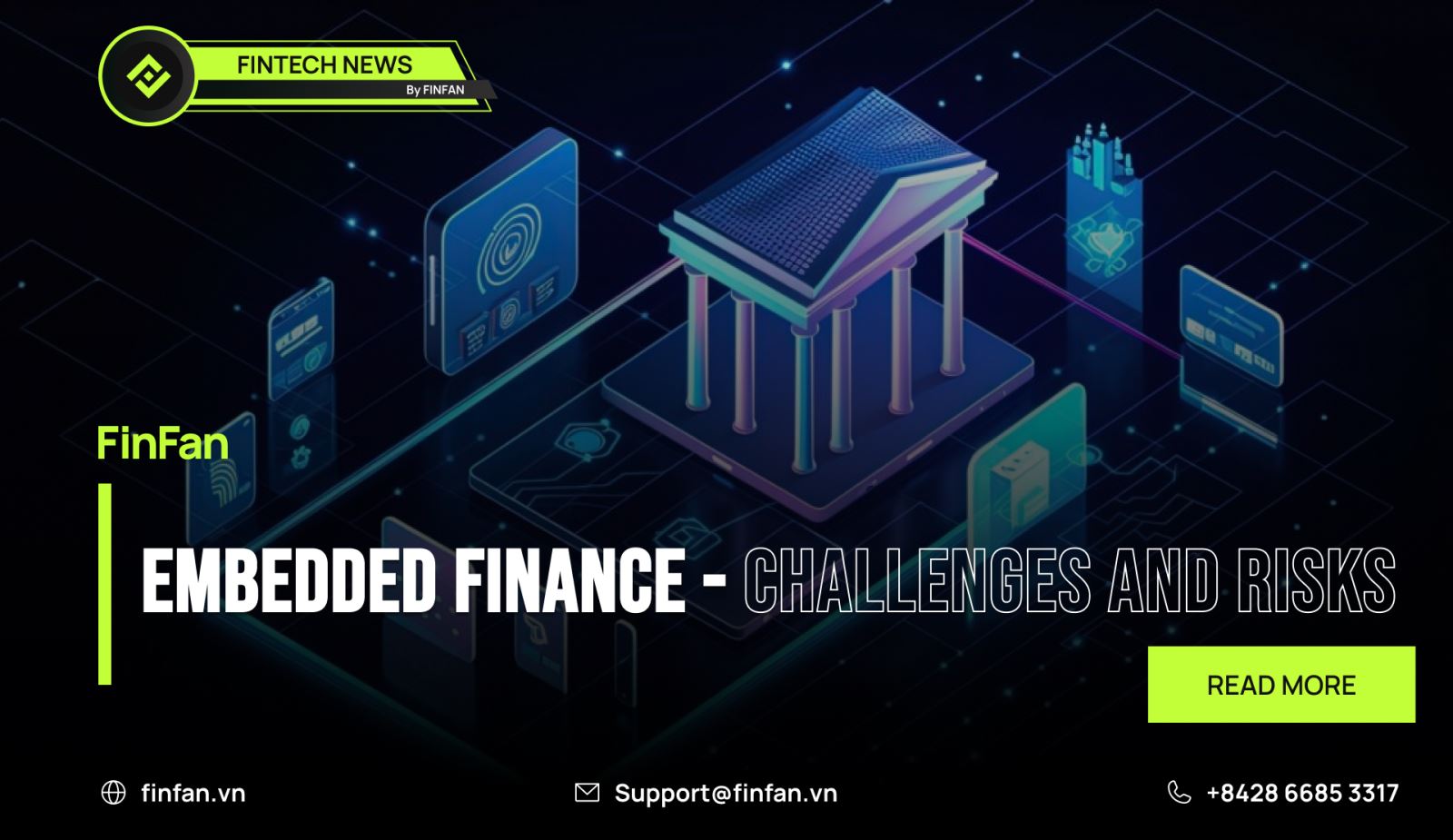Embedded Finance (Part 3) - Challenges and Risks

Inside that article, we also summarize some risks and challenges that fintech companies could face when they start businesses in this field. Now, let’s learn more about those dangers and challenges through the following article.
First, let's explore the challenges that will await fintech companies when they operate in the field of embedded finance.
Not researching customers carefully leads to creating incorrect products or customers not needing the product.
Indeed, technology will always be something pioneering and attractive to customers. However, overusing technology without carefully researching market segments and user needs will lead to the creation of products that are not needed by the market or do not meet user needs.
A typical example in Vietnam is that street coffee shops or rice noodle vendors will not need QR banking services or money transfers via e-wallets because of users' habit. The above is paid in cash (due to its cheapness and convenience). However, some restaurants, hotels, cafe chains, etc. will need this service.
Another typical example can come from the fact that some e-commerce sites about art do not necessarily need to set payment methods for products because most art buyers often like to see the paintings directly. Then discuss the value of that painting with the shop owner (sometimes the shop owner doesn't even put a price or only puts the price range of the painting on his website).
Only one technology company that holds the majority of the market share in this segment has a competitive advantage in the market.
Creating embedded finance is not as difficult as many other forms of technology, and sometimes only an API code is needed to connect payment solutions or financial lending technology to non-finance parties.
For the above reason, it is very difficult for fintech companies in the same field to compete in the market with companies that have established and increasingly developed partner networks many years ago.
Understanding the above problem, FinFan (a brand of Best Way Corp) was created. Best Way is one of the pioneering companies in the cross-border financial technology industry (X-border Fintech), licensed by the State Bank of Vietnam (SBV) to directly receive and pay foreign currency from the 4th of July 2014.
In addition to cooperating with many banks, e-wallets MoMo, ZaloPay, VNPay, VNPT Pay, ... in the field of money transfer, and international payment, ... in Vietnam, Best Way also cooperates with over 40 multinational corporations such as Money Gram, Thunes, Remitly, PaySend, TerraPay, Euronet, Sigue, Dlocal, Ripple, Abra, ...
Second, let's learn about the risks that the embedded finance industry faces.
Difficulty in setting up user KYC/AML system.
KYC stands for a system that helps us determine a user's identity. It includes features such as fingerprinting, and face scanning along with collecting some user identification documents online.
KYC will help embedded financial services businesses identify their customers. By using KYC, financial services parties can easily collect information and evaluate whether their customers or users are trustworthy or not.
This term in the embedded financial services business may be called KYB due to the specific nature of this industry connecting businesses so it will do business according to the B2B model.
However, after the KYB verification process, when the two businesses have a connection, the embedded financial intermediary will still need partners to provide deposit services (possibly remittance, cross-border payments) with the receiving party ensuring their KYC process.
It is also very difficult for embedded finance parties when they have to ensure that the KYC process of both partners goes as smoothly as possible.
Furthermore, after going through the KYC process, the embedded financial unit must also comply with AML (Anti Money Laundering) regulations prescribed by local law through the KYC information of both the sending and receiving partners.
System failure risk for embedded finance companies
This problem can occur due to the system of one of the three parties such as:
- the money doesn’t the recipient due to the system error of the embedded financial service,
- the sender must send more money deducted due to errors from previous transfers,
- or the recipient receives too much money, more than the amount sent by the sender due to problems arising from a system error of the partner transferring money to the recipient.
In the above cases, the embedded financial service provider must also sometimes find a method to support the partner sending and receiving money to overcome the consequences for customers.